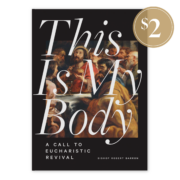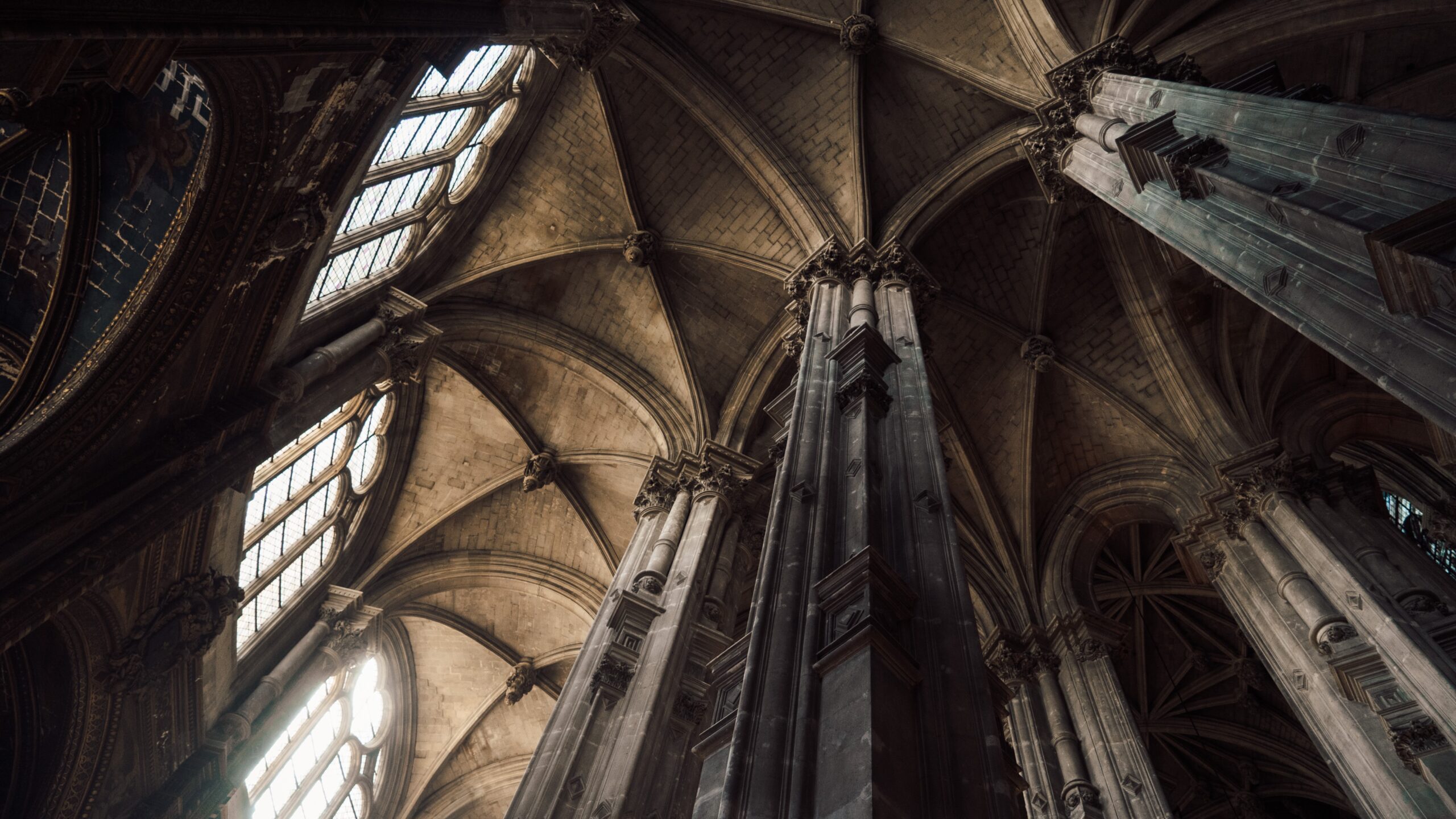Although largely known for his work as a preacher, as the host of the radio program The Catholic Hour, TV shows, many books, and extensive academic career, Venerable Fulton J. Sheen had a great love for Sacred Architecture. The crowning jewel of church architecture, for Sheen, was the Gothic tradition. In his life, Sheen had a great devotion to our Blessed Mother. This affection transferred over to one of his favorite churches: the Gothic Cathedral of Notre Dame in Paris.
In his book, Thoughts For Daily Living originally written in 1956, Sheen discusses two important points regarding Sacred Architecture: 1) the philosophy behind architecture and 2) the sacramentality of architecture. He writes “Architecture is a reflection of a philosophy of life.” This short quote gets to the heart of all architecture, particularly church architecture.
Every church is meant to be a microcosm of the heavenly Jerusalem.
Continuing, Sheen explains the view of the modern world and its effect on architecture: “The basic philosophy of the contemporary world is materialism, or the denial of the spirit. But if there is no world above that which can be seen, touched and scientifically analyzed, then there never can be ornamentation, for ornamentation is symbolism or the communication of the nonmaterial through the material. Ornamentation implies another world beyond this.” Sheen himself was not a liturgist nor an architect. He did not understand the nuances between ornamentation and decoration. His point, however, is clear for architects: one’s philosophy or way of thinking is the basis for architecture. If one is a classicist, their buildings will be in the classical tradition. If a modernist, then the buildings will be modern.
In the previous quote, Sheen is also hinting at the sacramentality of architecture. In These Are the Sacraments, Sheen writes that “A sacrament, in a very broad sense of the term, combines two elements: one visible, the other invisible-one that can be seen, or tasted, or touched, or heard; the other unseen to the eyes of the flesh. . . . A spoken word is a kind of sacrament, because there is something material or audible about it; there is something spiritual about it, namely, its meaning.” A sacrament, therefore, broadly understood is something physical that makes present some invisible spiritual reality.

Apply this sacramental principle to architecture, and it means that an office is meant to look like an office and a church to look like a church. What Sheen was witnessing in his own day, (as we are witnessing in our own) is that since the contemporary world is extremely materialistic, modern architecture is devoid of sacramentality. As an example, Sheen notes that the United Nations building and many other buildings on Park Avenue in New York City look like “illuminated cracker boxes, or elongated shoe boxes on stilts.”
While discussing the sacramentality of buildings, Sheen writes about the sacramentality of the church building, particularly the cathedral: “The world is a great sacrament and the cathedral is a still greater one. The cathedral synthesized everything: All kingdoms, the mineral, the vegetable, the animal, the human, and the angelic—all arts, all sciences, and all times – left their trace on it. All nature rebelled with Adam and all nature was redeemed in Christ. Hence Our Lord, when He sent out His Apostles to teach, did not say ‘Preach the Gospel to every man,’ but ‘Preach the Gospel to every creature.’ The architects of the cathedrals again took Him at His word and brought every creature into their structures; there are trees and flowers and birds and fishes.” Sheen is here writing on the cosmological aspect of church architecture. All the statues and mosaics of angels, saints, and nature represent the angels, saints, and nature that give praise to God in the heavenly Jerusalem. Once again, Sheen brings to the foreground the sacramental character of church architecture.
Not only does Sheen criticize modern architecture but he also explains why it looks the way it does: “The Ancient architecture was always using material things as signs of something spiritual. But today our architecture is flat, nothing but steel and glass, almost like a cracker box. Why? Well, because our architects have no spiritual message to convey.” Modernism says that there is no spiritual realm. No angels (or demons). The modernist makes the same mistake that Adam and Eve made in the Garden: he removes God and places himself in His stead.

Sheen writes that “When civilization was permeated with a happier philosophy; when things that were seen were regarded as signs and outward expressions of the things that were not seen, architecture was enhanced with a thousand decorations: a pelican feeding her young from her own veins symbolized the sacrifice of Christ; the lion breathing new life into her dead cubs represented the Resurrection; the fox peeking his head around the corner was a warning against the wiles of Satan.” Every church is meant to be a microcosm of the heavenly Jerusalem. It should be adorned as St. John describes it throughout the book of Revelation. When man disregards this philosophy of life, one ends up with centrums and “house churches”—buildings that reflect a modernist philosophy of life.
For Sheen, architecture, especially sacred architecture, speaks volumes to the human race. He believed that sacred architecture was even spoken of in the Gospels writing: “Our Lord on the on the occasion of His triumphant entrance into Jerusalem said that if men held their praise from Him, the very “stones would cry out”—which they did indeed in Gothic cathedrals. Now the stones are silent, for modern man believes there is no other world, no other destiny than that of the stone itself.”
It is said that all reform and renewal of the Church begins with an interior reform and renewal of the self and the individual. This is also true for Sacred Architecture. The solution to this problem is regaining that philosophy of life that says there is a God, a heaven, a hell, angels, demons, saints, etc. As Sheen says, “[w]hen Faith in the spiritual is lost, architecture has nothing to express or symbolize.” This philosophy is that of the Catholic Church. It should be taught not only at schools but especially in the home within the family. For Sheen, then, if one wishes to see the sacramental character of sacred architecture restored, this philosophy of life is the starting point for its renewal.
